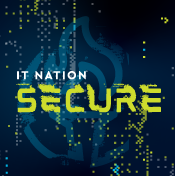How IT teams can implement proactive IT management
IT disruptions—whether caused by slow system performance, recurring user issues, or overlooked vulnerabilities—can silently drain time, money, and morale. In fact, a recent study found that 80% of lost time in IT incidents comes from just 12.6% of tickets, highlighting how even a few recurring problems can snowball into major productivity losses and potential downtime. Despite this, many IT teams remain stuck in reactive IT management, overwhelmed by alert fatigue and struggling to keep pace with mounting demands.
The solution? Proactive IT management.
By shifting from a reactive to a proactive strategy, IT teams can anticipate issues before they escalate, streamline service delivery, and strengthen both security and performance. Through tools like remote monitoring and management (RMM) software, IT teams can take service delivery to the next level without additional headcount. Embracing a more proactive approach toward IT management not only helps minimize security and network performance issues, but also enables teams to operate at new levels of efficiency and productivity.
Key takeaways
- Proactive IT management prevents problems from occurring, while reactive IT management waits for problems to occur.
- Proactive IT management supports improved security, network performance, and efficiency.
- Continuous monitoring can alert teams to potential issues early, preventing them from escalating, and collecting data can be used to anticipate future events.
- Automating repetitive tasks like patch management and routine maintenance frees IT teams to focus on strategic planning and high-level projects.
- Remote monitoring and management software is the foundation of proactive IT management. Automation, continuous monitoring, and predictive analytics provide a comprehensive view of operations and insights.
What is proactive IT management?
Proactive IT management is a strategic, preventative approach to IT operations that aims to identify and resolve issues before they impact business performance. Rather than reacting to problems as they occur, this methodology emphasizes continuous infrastructure monitoring and long-term planning.
With the help of advanced tools, such as remote monitoring and management (RMM) platforms, IT teams gain real-time visibility across endpoints, servers, networks, and cloud environments. This enables them to detect anomalies early, close potential security gaps, and optimize systems proactively.
Adopting proactive IT management requires shifting to a mindset and practices that anticipate potential system vulnerabilities, implement preventive measures, and improve infrastructure through strategic planning.
Proactive vs reactive IT management
Reactive IT management can be best described as a break-fix model: IT teams act only when a disruption or failure affects end users or customers. Reactive IT management focuses on resolving problems in the moment without necessarily committing to investigating or addressing the underlying causes and recommending changes to prevent future issues.
Some organizations with a reactive philosophy may go this route due to prioritizing cost savings by focusing on immediate problems rather than planning. However, this approach risks both instability and higher expenses later on. Think of it like continuing to take pain medication to reduce symptoms without addressing the root cause of the pain. The risks for organizations when it comes to adopting this perspective include unexpected downtime, higher costs for recovery, and damage to their professional reputation and brand with both potential employees and customers.
In contrast, proactive IT operations management is all about continuous monitoring, prevention and planning. It involves monitoring infrastructure to identify potential issues before they affect performance, catching problems before they have a chance to cause significant damage, and outlining IT needs for the future.
5 benefits of proactive IT management
While proactive IT management requires more effort and resources to set up and oversee, it brings multiple benefits that make it the better choice over a reactive approach.
- Long-term cost savings. Implementing a proactive strategy reduces the incidence of technical issues that can, over the long term, minimize time dedicated to supporting preventable issues with outdated devices and reduce the changes of downtime caused by malfunctioning hardware or software. Organizations can better forecast IT spending, avoiding unexpected costs and reducing technology debt.
- Reduced downtime. Preventing issues or addressing them before they have a chance to become significant lessens the chance of systems going down or becoming inaccessible.
- Improved security posture. Ensuring that systems are patched, maintained, and updated regularly minimizes security vulnerabilities.
- Enhanced compliance. The ability to identify risks early on helps organizations maintain compliance with industry and legal regulations. Reactive approaches also often fail to maintain the necessary documentation for compliance, risking violations.
- Increased productivity and efficiency. Systems that work efficiently and don’t go down unexpectedly help employees get more work done and done faster. IT teams are also able to focus on more long-term and strategic projects when they don’t have to constantly attend to unexpected support requests.
In addition, organizations with a proactive approach to IT are better positioned to implement modern and emerging platforms and infrastructure for evolving business needs. Learn how to expertly leverage these technologies for continued success with our eBook, Remote Monitoring and Management: The Key to Proactive, Efficient IT Service Delivery.
Implementing proactive IT management
A proactive approach offers significant advantages over reactive management. Unified IT management offers teams more insight into both the risks and opportunities in organizational technology infrastructure, helping drive efficiency, productivity, and cost savings.
However, implementing proactive IT management can seem overwhelming, leading many organizations to delay—which only makes it harder to do later. In this section, we’ll go over each component of proactive managed IT services, explain what is required for each one, and show how each contributes to overall management.
Here’s how to bring proactive management to life across your IT environment.
1. Unified endpoint monitoring
Proactive IT management begins with visibility, and unified endpoint management is the foundation of that visibility. Proactive IT management can be enhanced by leveraging RMM solutions, which provide IT with the visibility and control needed to manage environments more proactively and strategically. Modern RMM tools can monitor a wide range of devices and environments, as well as automate routine time-consuming tasks, and support data-driven planning through single-paned IT management. All of these features are essential for improving productivity and operational efficiency without sacrificing network performance or security.
This comprehensive view allows teams to establish baselines for normal performance and quickly detect anomalies that may signal deeper issues. With intelligent and custom monitors providing real-time alerts, endpoint monitoring via RMM software enables IT teams to identify issues before they escalate and respond quickly to errors, minimizing downtime and reducing the burden of reactive firefighting.
Endpoint monitoring is especially critical for security and compliance, as hackers’ tactics can evolve quickly and requirements for meeting industrial and legal regulations can change. With greater visibility into operations, teams can be sure they are meeting organizational needs in these areas at all times.
2. Hyperautomation
Despite IT environments becoming more complex, 49% of work can actually be automated. Yet standard automation tools may not go far enough to meet evolving operational demands. Robotic process automation (RPA) software extends the capabilities of RMM platforms by allowing IT teams to connect their tool stack, automate complex processes, and execute bots from other solutions, like PSA. This approach, often referred to as hyperautomation, enables organizations to streamline repetitive processes, minimize the cost of errors, and increase operational consistency.
RPA bots can replicate common time-consuming technician actions including:
- User Support and Troubleshooting
- User Account Management
- Mailbox Permissions
- Outlook Management
- Mail Contact Management
When used in conjunction with RMM and PSA solutions, this next phase of IT automation enables a more proactive approach to real-time monitoring that would otherwise require manual intervention.
3. Proactive patching and maintenance
Staying on top of patch management, updates, and maintenance is critical to secure technology infrastructure, optimize performance, and promote productivity. Yet in a reactive environment, this can be challenging. It’s all too easy for IT teams to lose track of patches, forget to do updates, and let regular maintenance slide.
Taking a proactive approach to patch management is largely centered around the automation of routine and repetitive processes.
Strategies for implementation include:
- Using automated patch detection tools that identify critical updates across diverse systems and apply them automatically.
- Scheduling regular maintenance ahead of time to occur during windows that minimize business disruption, such as overnight or over the weekends.
- Assessing system reports on performance and usage for signs that hardware and software might need to be replaced or upgraded.
These actions prevent issues that could lead to loss of productivity or leave systems vulnerable. It also helps teams anticipate when system components need attention, preventing expensive failures and optimizing planning and budgeting.
4. Network monitoring
Network monitoring plays a crucial role in proactive IT management by offering visibility into infrastructure health and performance. RMM platforms with built-in network monitoring capabilities allow IT teams to proactively identify latency issues, device failures, or abnormal network behavior that could disrupt operations. Automated, topology mapping and continuous monitoring of managed switches, routers, firewalls, and other network devices in real time enables faster root-cause analysis and early resolution before end users experience an outage.
By integrating network monitoring into a broader proactive managed IT services strategy, teams gain a unified view of both endpoint and network performance. This reduces tool sprawl, improves decision-making, and strengthens operational efficiency. Historical data gathered through monitoring also supports long-term capacity planning and helps ensure that network resources scale with evolving business demands.
5. Intelligent alerts
Without careful and continuous tuning, traditional RMM tools have a tendency to generate a significant amount of alerts that overwhelm teams. RMM platforms that use intelligent alerting are able to automate identifying common issues, link common issues with automatic remediation, group related issues, and route the resulting tickets generated to a PSA tool, completing most of the triaging work before the ticket ever touches a board. Advanced monitoring solutions like intelligent alerts are either pre-built in RMM solutions or designed and implemented manually.
When integrated into a proactive IT management approach, intelligent alerts help reduce downtime and increase response efficiency. Teams can also automate responses to specific alert conditions, such as executing tasks or complex scripts, reducing manual intervention overall, and often eliminating manual intervention for common issues. This level of automation and intelligence improves service quality while allowing IT professionals to focus on higher-level initiatives. By using alerts not only to detect but also to respond to issues, organizations can move toward a more predictive and self-healing IT environment.
6. Asset management
Proactive IT asset management gives organizations full visibility into their hardware, software, and device configurations. Through RMM, IT teams can automatically discover, inventory, and monitor all endpoints and network devices under management. This ensures that nothing falls through the cracks, whether it's outdated software, unauthorized installations, or hardware nearing end-of-life, which can be tracked through PSA solutions for renewal or replacement project handling.
Asset tracking is vital for supporting compliance, reducing shadow IT, and informing upgrade or refresh cycles. Within the scope of proactive IT management, it enables teams to plan ahead, identify vulnerabilities tied to outdated systems, and ensure licensing remains up to date.
When combined with proactive managed IT services, asset management helps IT leaders anticipate future needs, optimize procurement, and align technology investments with business goals.
7. Creating a scalable IT infrastructure
When businesses grow, the IT infrastructure needs to grow alongside it. Without scalable infrastructure, systems can become overloaded, causing performance degradation and unexpected outages. Conversely, if organizational needs change or contract, scalable IT infrastructure enables IT teams to adjust resources and systems accordingly, reducing waste and inefficiency.
Creating a scalable IT infrastructure, such as investing in cloud-native solutions, allows organizations to act quickly to address these challenges and opportunities with:
- Dynamic resource allocation. System capacity can accommodate fluctuating endpoint counts.
- Cost optimization. More efficient resource allocation prevents overspending on services and resources.
- Centralized monitoring. This gives IT teams comprehensive visibility into and control over all systems, streamlining operations.
8. Business continuity and disaster recovery (BCDR) planning
Effective IT teams can anticipate and prepare for worst-case scenarios with a strong BCDR plan. By strategically designing, deploying, and testing backup and recovery processes, IT teams can ensure data recovery efforts meet business demands while mitigating costly downtime if accidental data loss, equipment failure, or cybersecurity event occurs.
Implementing solutions and processes in this area generally involves:
- Data discovery to understand location, sensitivity, frequency, and retention needs of all business information.
- Risk assessment and incident planning for disruptions and threats that the organization is most likely to face. (i.e. accidental deletion, equipment failure, malicious data destruction).
- Automated backup scheduling to ensure new data is protected and prevent oversights and manual errors from routine backup processes.
- Regular recovery testing that verifies restoration processes and data integrity.
- Consistent BCDR plan testing to ensure IT teams understand and can effectively carry out their roles and responsibilities during a data disruption event.
- Developing communication plans to employees, clients, vendors, and the general public (if needed) in case of excessive downtime or other business operation interruptions.
Implementing these steps can help mitigate the impact of data disruptions. By developing and practicing a holistic BCDR plan, IT teams can help organizations recover efficiently from a data loss event, providing leaders with confidence and peace of mind.
9. Proactive IT asset management
Proactive IT asset management gives IT teams an up-to-date view of technology infrastructure to help them pinpoint potential security vulnerabilities, see where software may need to be upgraded to keep up with internal operations and customer expectations, and identify areas where performance and workflows could be adjusted or enhanced.
This information also helps teams see where they should prioritize their time and budgets for new equipment, training, and maintenance, supporting cost and organizational efficiency.
Supporting proactive IT management with RMM software solutions
At the heart of proactive managed IT services is an effective RMM solution, empowering IT teams to work smarter, not harder. With centralized visibility across all endpoints, network devices, and environments, like backup and cloud health and availability, a robust RMM solution is an IT pro’s best friend. Capabilities including real-time monitoring, intelligent alerting, automated remediation, and issue tracking enable proactive IT monitoring at scale.
ConnectWise RMM is purpose-built for MSPs and IT teams looking to take their operations to the next level and can adapt to changing infrastructure demands without compromising visibility or control. Whether you’re managing a distributed workforce or scaling infrastructure to support business growth, RMM provides the flexibility, power, and scale required.
If you’re ready to make the switch from reactive to proactive managed IT services, watch a demo to see how ConnectWise RMM can help.






